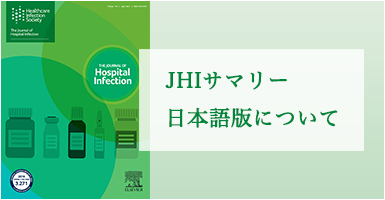0.05%クロルヘキシジンへの短時間の曝露は非変形性関節症患者の軟骨代謝を障害しない★
Brief exposure of 0.05% chlorhexidine does not impair non-osteoarthritic human cartilage metabolism
A.J. Best*, M.F. Nixon, G.J.S. Taylor
*Glenfield Hospital, UK
Journal of Hospital Infection (2007) 67, 67-71
0.05%クロルヘキシジンによるジェット洗浄は、1分間で99%の細菌を除去または死滅させる有効な創傷汚染除去法である。濃度0.05%以上または長時間のクロルヘキシジンへの曝露後に軟骨融解が生じるという報告があることから、整形外科の臨床ではクロルヘキシジンの使用が制限されている。本研究では、放射線標識した硫黄の取り込みを用いて軟骨代謝を測定することにより、変形性関節症患者および非変形性関節症患者の軟骨に対する0.05%クロルヘキシジンの1分間および1時間の曝露のin-vitroの影響を定量的に評価した。非変形性関節症患者の軟骨代謝は、0.05%クロルヘキシジンへの1分間の曝露によって有意な影響を受けなかったが、変形性関節症患者の軟骨代謝は顕著に障害された。1時間の長時間曝露では、いずれの軟骨にも顕著な影響が認められた。これらの結果は、変形性関節症の徴候のない患者の汚染された関節の開放創の汚染除去には、0.05%クロルヘキシジンが有用である可能性を示唆するものである。しかし、報告されているクロルヘキシジン使用後の軟骨融解の発生メカニズムがさらに明らかになるまでは、クロルヘキシジンは「清潔な」関節軟骨の洗浄に推奨できない。
サマリー 原文(英語)はこちら
監訳者コメント:
化学物質の軟骨組織への影響に関しての論文である。わが国ではクロルヘキシジンの粘膜面への使用が禁忌となっているが。日本ではクロルヘキシジンの軟骨組織への影響に関する認知はほとんどないと考えられる。示唆に富む論文である。
同カテゴリの記事
Pseudomonas aeruginosa infection in augmented care: the molecular ecology and transmission dynamics in four large UK hospitals
F.D. Halstead*, J. Quick, M. Niebel, M. Garvey, N. Cumley, R. Smith, T. Neal, P. Roberts, K. Hardy, S. Shabir, J.T. Walker, P. Hawkey, N.J. Loman
*Queen Elizabeth Hospital, UK
Journal of Hospital Infection (2021) 111, 162-168
A microbiological assessment of sterile surgical helmet systems using particle counts and culture plates:recommendations for safe use whilst scrubbing
Community-associated meticillin-resistant Staphylococcus aureus as a cause of hospital-acquired infections
B. Pilmis*, T. Billard-Pomares, M. Martin, C. Clarempuy, C. Lemezo, C. Saint-Marc, N. Bourlon, D. Seytre, E. Carbonnelle, J-R. Zahar
*Groupe Hospitalier Paris Saint Joseph, France
Journal of Hospital Infection (2020) 104, 293-297
Differences in molecular epidemiology of Staphylococcus aureus and Escherichia coli in nursing home residents and people in unassisted living situations



